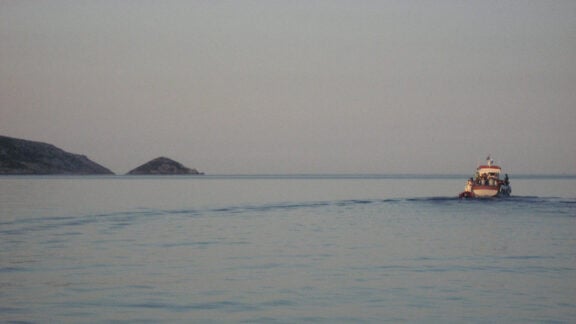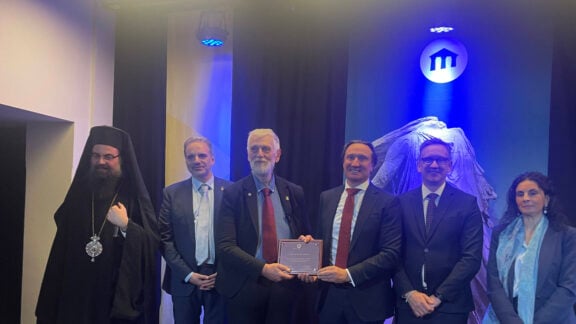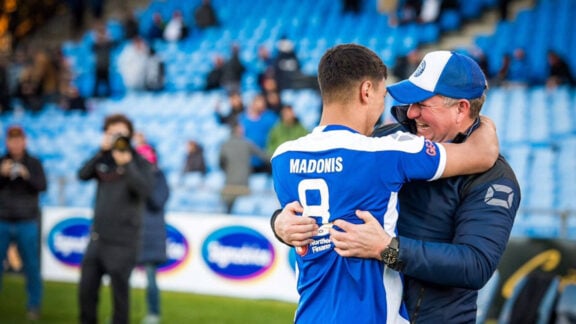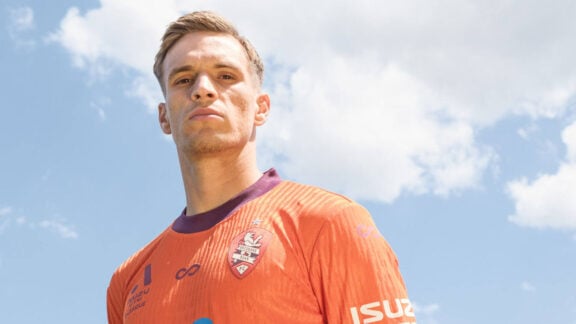With two new churches opening in the past two weeks and more in the pipeline, Melbourne is cementing its place as the Greek Orthodox Church capital of Australia and the wider diaspora.
On Sunday, North Altona’s church The Dormition of Our Lady conducted its first service, with Archbishop Stylianos, Bishop Ezekiel and Bishop Iakovos leading proceedings.
It’s the second church to open in just two weeks, with the Holy Epiphany Church in Frankston ringing its bell for the first time the Sunday before.
Victoria is now home to 44 Greek Orthodox Churches, the most in any state of Australia.
NSW comes in second, with 38 churches, while South Australia has 15 under the auspices of the Archdiocese.
Per capita, Melbourne hosts the most Greek Orthodox Churches outside of Greece, considering the small population (around 5.8 million).
New York State in the USA might boast 62 Greek Orthodox churches to its name thanks to its strong Greek American community, but considering the total population (19.6 million) its church numbers aren’t as impressive as Melbourne’s.
The parish priest of the new Altona church, Father George Frangos, says with the growing urban sprawl and the changing dynamic of Greek Australian suburbs in the state, we’ll be seeing more churches popping up for years to come.
The Altona church is proof of that, as it has been built to cater to a growing Greek community in the outer western suburbs.
“It’s quite a large area, there’s probably about 9,000 registered Greek Orthodox (parishioners) according to the data under our parish,” he tells Neos Kosmos. “And regular visitors of our parish are about 500 families.”
It’s one of the larger churches of the state, with the capacity to house almost 700 parishioners.
Like many of the Greek Orthodox churches in Australia, the Altona church utilises both Greek and Australian influences.
All the marble work has been hand-made in Greece to the church’s specifications, while the rest of the church is made with Australian materials.
What the Altona church and the newly minted Frankston church show is that there is a growing need for the work the church does.
Father Frangos says it’s a testament to the cultural and religious ties the Greek community has.
“In adverse timeframes we see that other denominations (particularly Christian denominations) are starting to decline in numbers, but we’re seeing the Orthodox Church still gaining ground and thriving,” he says.
Yet, with many of its current faithful ageing, the future of the church is in doubt in Australia.
As a generation shift happens and with Greek proficiency levels diminishing in the second and third generation of Greek Australians, will the church still be relevant in the community? Will the 118 Greek Orthodox churches in Australia still bring in the crowds?
Father Frangos sees the Archdioceses opening up to new parishioners outside of the Greek Australian community to fill the gaps.
“What we’re seeing is the Orthodox faith is starting to open up to everybody,” he says.
“So in anticipation of others joining our church from mixed marriages or those who have an interest within our church and our faith, we’ll see a growth and demand for it.”
In visiting America, where the Greek community is much older and where the generational shift has already happened, Father Frangos says there’s no need to worry.
“I’ve experienced it first hand, and although the majority of the people in the churches don’t know much Greek, they still maintain their cultural and religious traditions,” he says.
“The churches are absolutely packed even just on a normal Sunday.”
What might also be a problem for the church in future years is meeting demand as the old priest guard retires.
The theological colleges will have to find a way to increase enrolments, while the Archdiocese will need to look at better promoting the priesthood career.









